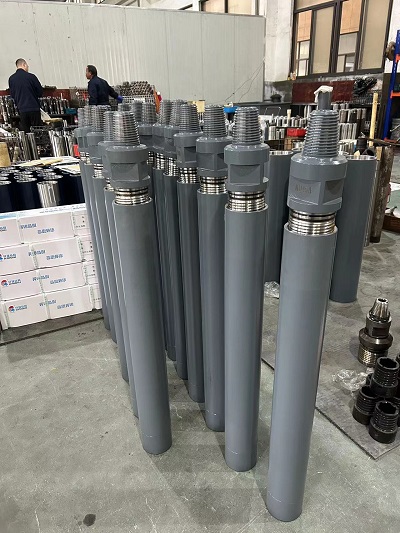Abstract:In the drilling industry, tool reliability is essential to ensure efficient operations, reduce downtime, and lower maint...
In the drilling industry, tool reliability is essential to ensure efficient operations, reduce downtime, and lower maintenance costs. One of the key processes that directly impacts the durability and performance of drilling tools is heat treatment. By altering the microstructure of metal components, heat treatment enhances mechanical properties such as strength, hardness, and wear resistance. This process plays a particularly important role in the production and performance of Extension Drilling Tools and Button Bits, both of which are critical in mining, tunneling, and construction applications.

Extension Drilling Tools are subjected to bad forces during operation. These tools are designed to extend the reach of drilling rigs and must maintain their integrity under repeated stress. Heat treatment improves the fatigue resistance of these tools by refining their internal structure, less the risk of fractures and deformation. This increased resistance helps ensure that Extension Drilling Tools perform reliably, even in high-impact environments where vibrations and torque loads are frequent.
Similarly, Button Bits—used as cutting tools at the end of drill strings—require exceptional hardness and resistance to abrasive wear. During drilling, Button Bits encounter hard rock formations that can quickly wear down unprocessed or poorly treated metal surfaces. Through proper heat treatment methods, such as carburizing or induction hardening, the wear resistance of Button Bits is significantly improved. This allows them to maintain their cutting edge longer, reducing the frequency of replacements and improving overall efficiency.
There are several heat treatment methods commonly used in the manufacture of Extension Drilling Tools and Button Bits. Quenching and tempering is one such method, where components are heated to high temperatures and then rapidly cooled. This is followed by tempering to relieve internal stresses. This process results in a balance between hardness and toughness, which is essential for components exposed to both impact and abrasive conditions.
Another commonly applied technique is surface hardening, which treats only the outer layer of the metal. This approach is especially beneficial for Button Bits, which need a hard exterior for cutting performance but also require a tough core to absorb shock. This dual-property structure is crucial for ensuring that Button Bits do not chip or crack easily under pressure.
The benefits of heat treatment also extend to the service life and reliability of Extension Drilling Tools. By increasing wear resistance and fatigue strength, heat-treated tools maintain their performance over extended drilling cycles. In addition, properly treated Extension Drilling Tools are less prone to corrosion and surface damage, which are common challenges in harsh underground environments.
It's worth noting that not all heat treatment processes yield the same results. The effectiveness depends on factors such as material composition, treatment temperature, cooling rate, and post-treatment procedures. Manufacturers of Button Bits and Extension Drilling Tools must apply precise control throughout the heat treatment process to achieve consistent quality. Advanced testing methods, such as hardness testing and microstructure analysis, are essential in verifying the effectiveness of the treatment and ensuring that each batch of tools meets the desired specifications.
In conclusion, heat treatment is a crucial step in enhancing the reliability and performance of drilling equipment. For Button Bits and Extension Drilling Tools, this process significantly improves wear resistance, structural integrity, and longevity under demanding conditions. By investing in proper heat treatment technologies, the drilling industry can ensure that these tools deliver consistent performance, reduce operational interruptions, and ultimately contribute to safer and more efficient drilling operations.

 简体中文
简体中文 English
English España
España русский
русский
